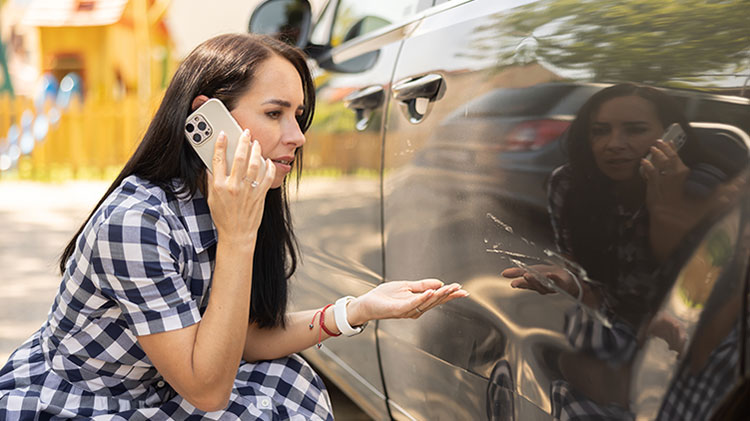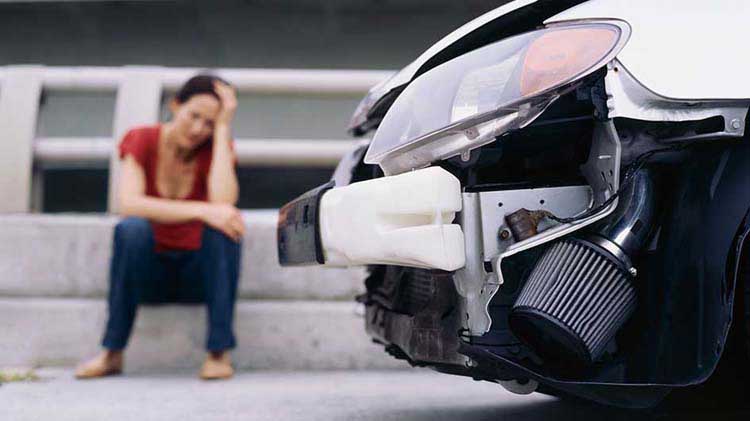What is collision coverage and what does it cover?
Discover what collision coverage insurance is, what it does and doesn't cover (like theft or weather damage) and why you need this coverage in place before an accident to help pay for repairs afterward.
Overview: Collision coverage may be essential for effectively managing your auto insurance. This optional type of coverage assists in covering the repair cost for your vehicle after an accident with another vehicle or object, regardless of who is at fault. This article explains what collision coverage usually includes, what common incidents it typically does not cover (like theft or weather damage, which are covered by comprehensive coverage) and discusses important factors like deductibles and your car’s value. This information may help you decide if this coverage is the right choice for you.
Are you thinking about your car insurance and wondering what is collision coverage? This important type of insurance can help protect your finances after certain types of car crashes. Whether you’re a first-time driver or someone revisiting your coverage options, understanding collision coverage can help you make an informed decision that help fit your needs.
What is collision coverage?
Collision coverage is a type of optional car insurance that helps pay to repair or replace your vehicle if it is damaged in a crash. This could involve an accident with another car or running into a stationary object like a utility pole, mailbox or guardrail.
One key feature of collision coverage is that it applies regardless of who caused the accident. Whether you’re at fault or not, this coverage helps ensure repair costs don’t fall entirely on you. However, you would still need to pay out-of-pocket expenses up to your deductible before your insurance coverage would apply.
What does collision insurance cover?
Collision insurance typically helps cover damages to your car after specific incidents (losses covered under the policy), including:
- Accidents involving another vehicle — for instance, collisions ranging from fender-benders to more severe accidents.
- Crashes with stationary objects — examples include hitting a tree, fence, pole or building.
- Rollover accidents — if your car flips over during an accident.
- Hit-and-run damage — if another driver damages your car and drives off without leaving contact information.
Keep in mind that collision insurance only applies to damages to your own vehicle. If you are at fault for damages to someone else’s property or vehicle, that is covered by your liability insurance.
What does collision coverage not cover?
It’s equally important to understand what collision car insurance does not cover. Here’s what generally isn’t covered by collision insurance:
- Car theft — if your car is stolen, that may be covered under comprehensive insurance.
- Vandalism — acts like slashed tires or keyed doors may also fall under comprehensive coverage as well.
- Weather damage — whether it’s hail, floods or damage caused by fallen trees, comprehensive coverage usually applies here.
- Hitting an animal — collision insurance typically doesn’t cover damage from hitting a deer or other animals; this would usually fall under comprehensive coverage.
- Damage to someone else’s property — this is covered by Property Damage liability insurance, which is required by law in many states.
- Medical costs — medical expenses for you and others who qualify for coverage are typically addressed by medical payments (MPC) or personal injury protection (PIP) coverage. Whether MPC or PIP is available depends on the state where you live.
As you weigh your options, you may come across the discussion of collision vs. comprehensive insurance. In short, collision focuses on damages from crashes or rollovers, while comprehensive covers non-collision events like theft and weather damage. Because they cover different types of losses, many people choose to purchase both coverages.
Understanding the differences between collision, comprehensive and liability
Here’s a quick comparison to help clarify the differences:
Do I need collision insurance?
Whether or not you decide to consider collision insurance depends on your personal situation. While collision coverage isn’t a requirement in most states, there are instances where it may be a good choice.
- If you have a car loan or lease — lenders and lessors typically require both collision and comprehensive coverage to help protect their financial interests in the vehicle.
- If you own your car outright — deciding whether to add collision insurance depends on several factors:
- Your car’s value — collision insurance will pay up to your vehicle’s actual cash value (ACV), in the event of a covered loss. If your car is worth only a small amount, the cost of coverage might outweigh the potential benefit.
- Repair costs — consider whether you could pay for unexpected car repair costs out of pocket.
- Your budget — evaluate how adding collision insurance (and paying a deductible) fits into your overall financial picture.
How do premiums and deductibles work?
When you choose collision coverage, your out-of-pocket costs are determined by two key factors:
- Premium — this is the amount you’ll pay on your insurance policy for including collision coverage. Premiums vary depending on factors like your car’s make and model, your driving history and where you live.
- Deductible — the deductible is what you pay out of pocket before insurance applies to cover repair costs. For instance, if you have a $1,000 deductible and the repair estimate is $4,000, you would pay $1,000 and your insurance would cover the remaining $3,000 (up to your policy limits).
Pro tip: Choosing a higher deductible usually lowers your premium, while a lower deductible typically raises it. Evaluate what works best for your budget and willingness to pay out of pocket if you have a loss.
Is collision insurance worth it for an older car?
Here’s one of the most common questions about coverage: Should I consider collision insurance on an older car? The answer depends on the vehicle’s value and your specific needs.
If your car’s ACV is significantly lower than the cost of adding collision insurance, plus your deductible, it might not make financial sense to carry this coverage. For example, if your car is valued at $2,000 but your deductible and annual collision premium are close to that, opting out of collision insurance could make sense.
However, if your older car is still valuable enough that you’d want to repair it after an accident, collision coverage might still be a smart choice.
Next steps
Car insurance can feel like a lot to navigate, but understanding the details of coverage types like collision insurance may make a big difference for your financial security on the road. Ready to take the guesswork out of choosing coverage? Help protect your vehicle with State Farm® collision car insurance, designed to help you manage repair costs after an accident.
Have questions specific to your needs? Contact a State Farm agent today to learn more or check out our user-friendly online quote tool to explore auto insurance options that fit your lifestyle.
The information in this article was obtained from various sources not associated with State Farm® (including State Farm Mutual Automobile Insurance Company and its subsidiaries and affiliates). While we believe it to be reliable and accurate, we do not warrant the accuracy or reliability of the information. State Farm is not responsible for, and does not endorse or approve, either implicitly or explicitly, the content of any third-party sites that might be hyperlinked from this page. The information is not intended to replace manuals, instructions or information provided by a manufacturer or the advice of a qualified professional, or to affect coverage under any applicable insurance policy. These suggestions are not a complete list of every loss control measure. State Farm makes no guarantees of results from use of this information.
Please remember that the preceding descriptions contain only a general description of available coverages and are not a statement of contract. All coverages are subject to all policy provisions and applicable endorsements. Coverage options may vary by state. To learn more about auto insurance coverage in your state, find a State Farm agent.
This article was drafted with the help of AI and reviewed by State Farm editors.
State Farm Mutual Automobile Insurance Company
State Farm Indemnity Company
Bloomington, IL
State Farm County Mutual Insurance Company of Texas
Richardson, TX




